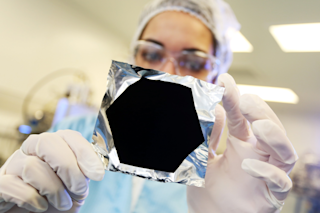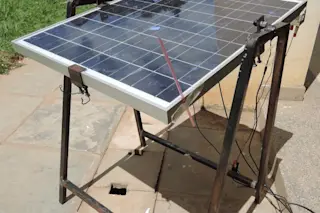During the dog days of summer, the monthly utility bill for an air-conditioned home can induce more perspiration than the temperature does. But could we cut the cord and cool our homes without using electricity or water? Aaswath Raman and his colleagues at Stanford University say that we can. Raman’s team has created an experimental material that sends excess heat into outer space — no fans, refrigerants or compressors needed. With 15 percent of electricity in U.S. buildings dedicated to keeping things cool, Raman’s cooling method could someday put a real dent in energy consumption on a global scale.
One trick Raman's device employs is called radiative cooling — the same method by which Earth loses heat to space. The method takes advantage of the fact that Earth's atmosphere is transparent to a very specific subset of heat radiation: the far-infrared wavelengths of eight to 13 microns. A device that ...













